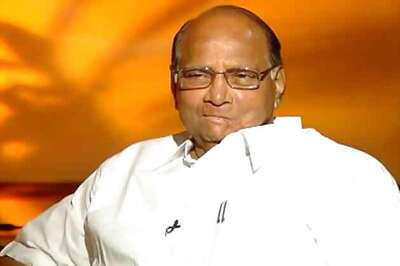
views
Every once in a while, there will be news items and columns on the state of employment in India. Some of this is ill-informed, based on old or unreliable data. Essentially, there are three sources of data on employment: (1) Household-based surveys; (2) Establishment-based surveys; and (3) Administrative data. (I am leaving out private surveys.)
These are the three official sources of data. EPFO, ESIC, and NPS are examples of administrative data. For instance, in 2022–23, almost 14 million net members were added to EPFO. Is this a measure of new job creation? For various reasons, it isn’t.
As an example, the moment an establishment crosses the threshold of 20 workers, all of it gets counted as a net addition. Administrative payroll data are indicators of formalisation, not employment.
Establishment-based surveys are ASI by MoSPI and QES by MoLE. (I wish people would stop using this acronym for the Ministry of Labour and Employment.)
In an informal economy like India, where there are usually no clear employer-employee relationships, unlike in more advanced countries, I am sceptical about establishment-based surveys telling us much about employment. Don’t get me wrong.
They do tell us something about demand for employment and, potentially, about skills and their lack. At present, both the Annual Survey of Industries (ASI) and the Quarterly Employment Survey (QES) have biases. Agriculture is a different proposition. But even outside of agriculture, neither is comprehensive in coverage. Both can be streamlined and improved, and time lags can be reduced.
Outside of agriculture, until the Indian economy changes dramatically, I think there is no getting away from household-based surveys. This means the PLFS (periodic labour force survey). We can complain about PLFS: The quarterly estimates only cover urban India, not rural. It is annual or quarterly, and why can’t it be monthly, like the Current Population Survey (CPS) in the US?
To emulate the US, data collection would have to move from personal interviews to personal interviews spliced with telephone interviews. Is that feasible? In the US, processed results are available within a week after the completion of surveys. Though delays in PLFS have come down, it is still one and a half to two months. (Can’t it be faster?) All these complaints about PLFS are valid, and PLFS needs improvements.
Having said this, there is no getting away from PLFS, which has been around since April 2017. That causes a problem because we can’t drag the time series back. To drag the time series back, we have the Employment-Unemployment Survey (EUS) of the NSS, which has been around since 1955 and for which we have 2016–17 data.
Anyone who works with data will tell you that it is a mistake to splice two datasets with different methodologies. This is a problem with the Institute for Human Development (ILO-IHD) report, which has just been released and has received a lot of attention in the media.There are also issues with how we define “employment” and “unemployment”.
Let me stick to PLFS, and we can’t drag it back beyond 2017. Let’s stick to those who are 15 years and older. Contrary to perceptions, the labour force participation rate (LFPR) has increased, from 49.8 per cent in 2017–18 to 57.9 per cent in 2022-23. Again, contrary to perceptions, LFPR has also increased among the young (15–29 years old), from 38.2 per cent in 2017–18 to 44.5 per cent in 2022–23. It’s one thing to say LFPR should be higher, in general, and among the young. It’s quite a different thing to say that LFPR hasn’t improved.
Yes, there are problems with defining unemployment. Nonetheless, the unemployment rate has declined from 6.0 per cent in 2017–18 to 3.2 per cent in 2022–23. For those between 15 and 29 years old, the unemployment rate has declined from 17.8 per cent in 2017–18 to 10.0 per cent in 2022–23.
Why is there a perception, based on ILO-IHD, that 83 per cent (in 2022) of the youth are unemployed? That’s irresponsible media reporting, based on an imperfect understanding of what the report said. The 83 per cent is that share of youth in total unemployed, not the share of unemployed youth. PLFS data are more iffy on formalisation. With the PLFS categories, there will be greater formalisation as the percentage of those who are on regular wages or salaries increases.
Between 2017–18 and 2022–23, the reverse seems to have happened, a trend more accentuated for women. This contradicts the impression one forms from administrative data. Does this mean there is no unemployment problem, even among the youth? Not quite. I don’t think that’s an all-India problem. To understand that, we need to zero in on specific states.
Finally, there is the RBI’s KLEMS database. As far as I know, data exists for January 2024, but the last report based on KLEMS is dated October 2022.
To quote from that report, “Employment, as measured by workforce participation rates, has been declining in India, especially among rural females. Growth in employment in India also slowed considerably in the recent period, and there was an absolute decline of eight million employed persons between 2011 and 2017.” There has been no report after that. But if one looks at the data, since 2017-18, there seems to have been a pickup in employment. For manufacturing and services (construction, trade), it is quite visible after 2020–21. There may be concerns about employment, but it is not as disastrous as is often made out to be.
The author is the chairman of the Prime Minister’s Economic Council and a well-known Sanskrit scholar. Views expressed in the above piece are personal and solely those of the author. They do not necessarily reflect News18’s views.




















Comments
0 comment